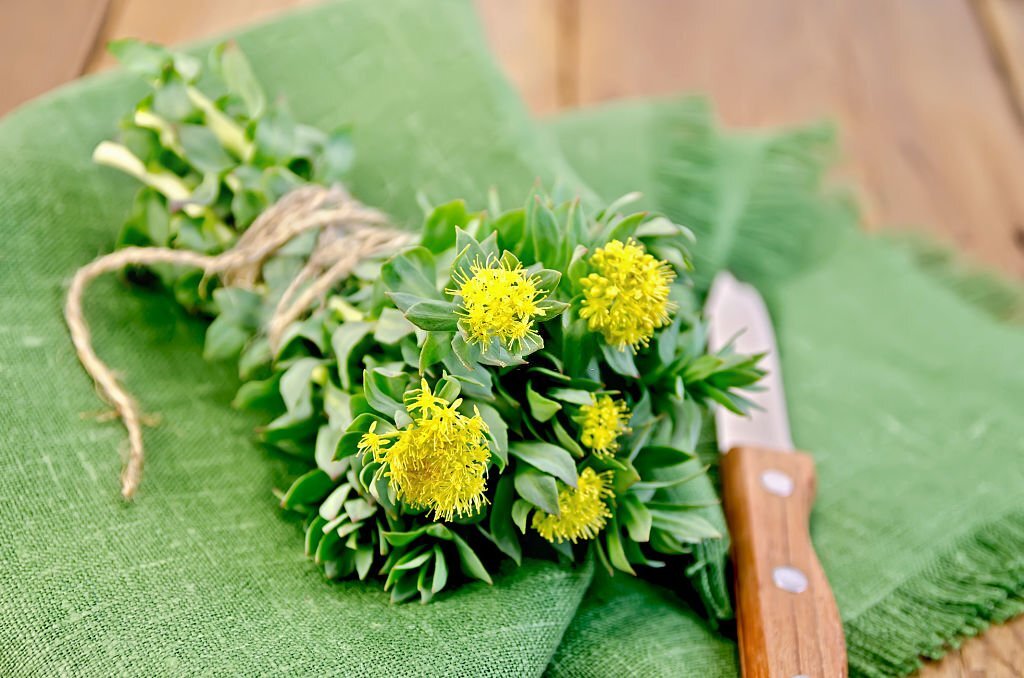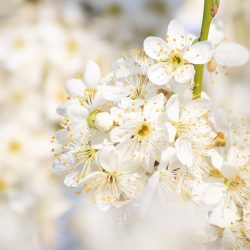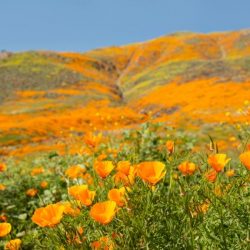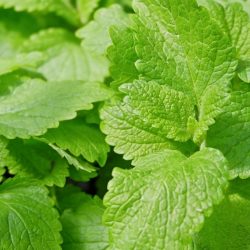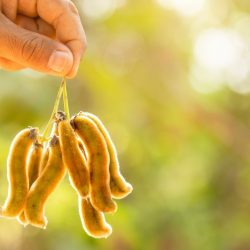The Latin appellation for Rhodiola derives from the Greek word rhodios , used by the Greek philosopher Dioscorides when he first described the plant in his De Materia medica (77 AD), as Rodio riza , in reference to the smell of rose given off by the root, once cut. Its vernacular name of golden root is an allusion to its legendary reputation as a panacea plant .
A little history
Its many properties, demonstrated by contemporary science, place it at the forefront of phytoadaptogens , in the same way as ginseng or eleutherococcus , with a more marked tropism for the psychic sphere , especially in the event of mood disorders and cognitive weakness . Rhodiola is undoubtedly the plant of physical exhaustion , and especially psychic .
If the West discovered rhodiola for about twenty years, to the point that its notoriety joins that of Panax ginseng , Russia and the Scandinavian countries have been using it for at least 3000 years to face the rigors of the Far North, and in particular to to enhance physical stamina , to improve sexual vigor, and to increase cognition and longevity. From East to West, legends abound as to the extraordinary virtues of the plant, which is to the peoples of the North what vibranium or adamantium are to the superheroes of the fantastic universe of Marvel Comics, namely a tremendous amplifier of human capacities.
In Ukraine, it is the story of Prince Danila Galitsky , who in the 13th century performed amorous exploits with the golden root that ignited the popular imagination. In Sweden, it was the fierce Vikings who would have drawn their legendary physical strength and their famous endurance from the said root, which ultimately allowed them to reach Valhalla, where Odin was waiting for them .
The reputation of the plant was such that the Chinese emperors, however sheltered from need with the beautiful energy resources in ginseng of the Middle Kingdom, sent expeditions to Siberia to bring back the precious pink stonecrop.
What are the main pharmacological properties of Rhodiola rhizome?
Activities on the central nervous system:
-
Improved intellectual abilities:
The beneficial effects of rhodiola on mental performance can in particular be explained in part by its anticholinesterase action . In vitro , an alcoholic extract of R.rosea leads to a 42% inhibition of acetylcholinesterase (AChE). This effect would therefore be linked to the presence of two flavonoid glycosides which, once isolated, lead to an equivalent level of AChE inhibition. A double-blind, placebo-controlled pilot study to evaluate the stimulating and adaptogenic effect of rhodiola on the mental performance of young doctors showed a significant increase in cognitive functions in the group treated with R.rosea, without any side effects.
In 2018, a systematic review as well as a meta-analysis of preclinical studies confirmed that R.rosea can improve learning and memory functions, via antioxidant, anti-inflammatory , cholinergic regulation , activity anti-apoptotic , improvement of coronary blood flow and cerebral metabolism .
-
Antioxidant and neuroprotective properties in models of neurodegenerative pathologies:
In humans, rhodiola exerts neuroprotective effects which may therefore improve the efficacy of antiparkinsonian therapies. In models of Parkinson’s disease , salidroside protects dopaminergic neurons by inhibiting in vitro and in vivo ROS and NO generation. This finding indicates that this compound may act as an effective neuroprotective agent by modulating the mitochondrial pathway related to ROS and NO.
-
Antidepressant properties:
In vitro , aqueous and methanolic extracts of rhodiola indeed inhibit the degradation of neurotransmitters (serotonin, norepinephrine) by inhibition of monoamine oxidases A and B, which shows potential therapeutic activity in depression and senile dementia . This effect is notably linked to the activity of rosiridine.
A 2016 review of the scientific literature confirms that rhodiola exerts major antidepressant activity . Its multi-target action concerns different levels of regulation of the cellular response to stress, and involves several neurotransmitters and their receptors, as well as the entire neuroendocrine sphere.
-
Antipsychotic properties:
Research is beginning to focus on the potential of rhodiola in neuropsychiatric disorders. A 2019 in vivo study showed that R. rosea extract potently reverses deficits in prepulse inhibition (established operational measure of sensorimotor synchronization, impaired in schizophrenia and other psychotic disorders). This early work suggests antipsychotic effects of rhodiola extract.
-
Reduction of mental fatigue:
Adaptogens; such as rhodiola, exert an anti- fatigue effect which thus increases the capacity for mental work in people with a background of stress and fatigue. A clinical study, conducted over 28 days in 60 people with fatigue syndrome due to chronic stress, shows that rhodiola extract indeed leads to a significant decrease in their production of salivary cortisol (a measure of stress), and an improvement stamina and focus. A randomized, double-blind, placebo-controlled, parallel-group clinical study in 161 young adults aged 19-21 showed a highly significant anti- fatigue effect at multiple dosages, with improved mental work capacity. Rhodiola is in fact used in the management of fatigue associated with Lyme disease.
-
Anxiolytic properties:
A pilot study conducted for 10 weeks in 10 patients with generalized anxiety disorder therefore confirmed that taking R. rosea leads to a significant decrease in anxiety (measured with the Hamilton Anxiety Scale), with little side effects (dizziness and dry mouth).
Improved physical performance:
-
Adaptation to effort:
A double-blind clinical study versus placebo on young volunteers also demonstrates that taking standardized extracts of R.rosea increases endurance.
-
Reduction of physical fatigue:
In vivo , taking extracts of R. rosea for 4 weeks reduces oxidative stress related to swimming, probably because the plant increases the capacity to trap ROS, and improves antioxidant defense mechanisms.
In particular, it has been shown that a single dose of Rhodiola rosea exerts a stimulating effect within 30 minutes of its administration, a reaction which lasts at least 4 to 6 hours. This effect is more potent than that seen with other phytoadaptogens like Schizandra chinensis and Eleutherococcus senticosus . This activity is due to phenylethanoids such as salidroside, rovasin, syringin and triandin, the latter being the most active.
Endocrine properties:
-
Action on the menstrual cycle and fertility:
During a study without a placebo group, rhodiola notably caused the return of menstruation in 25 out of 40 women suffering from amenorrhea, with the occurrence of pregnancy in 11 of the women.
-
Action on sexual function:
In a trial without a placebo group with 35 men suffering from erectile dysfunction or premature ejaculation, rhodiola in particular led to a significant improvement in the reported disorders.
-
Antidiabetic:
In vitro , aqueous and ethanolic extracts of rhodiola inhibit alpha-glucosidase.
Cardioprotective and vascular properties:
Ex vivo , aqueous and ethanolic extracts of rhodiola inhibit angiotensin I converting enzyme, thereby demonstrating antihypertensive potential .
Anti-cancer and anti-mutagenic properties:
In vitro studies indicate that salidroside inhibits cell growth of different human cell lines in a dose- and time-dependent manner. Rhodiola rosea rhizome extract thus promotes apoptosis and necrosis of cancer cells , and exerts a cytostatic as well as antiproliferative effect , which opens up the possibility of using it in cancer therapy to enhance the effectiveness of conventional cytostatics. .
Are there precautions for use concerning Rhodiola?
Contraindications:
- According to the EMA, in the absence of sufficient data, rhodiola is not recommended for pregnant or breastfeeding women, as well as for children and adolescents under 18 years of age.
Precautions for use:
- Use with caution in irritable or agitated subjects. The same is true for bipolar people, especially those with a history of manic episodes when taking antidepressants or stimulants. Medical monitoring is therefore required when using rhodiola in this context.
- Rhodiola is used in the morning and/or at noon. Its use at the end of the day could disturb sleep.
Drugs interactions :
- In theory, rhodiola can enhance the effect of plants and drugs with a psychostimulant effect.
- Its effects may be superimposed on those of angiotensin converting enzyme inhibitors.
- Due to its hypoglycemic effect, dosage adjustment may be necessary in patients receiving antidiabetic drugs.
- Change in blood pressure, therefore dose adjustment may be necessary in patients receiving antihypertensives.
- Possible interaction with losartan.
- Use with caution in patients using CNS depressants.
- Increased risk of bleeding, caution with aspirin, oral anticoagulants, heparin, clopidogrel, nonsteroidal anti-inflammatory drugs.
- Possible pharmacokinetic interactions with cytochromes P450, caution with drugs with a narrow therapeutic range; ask your pharmacist for advice.
- Inhibition of CYP3A4 and P-glycoprotein
- Possible interactions with paracetamol, acetazolamide, alpha-glucosidase inhibitors, anxiolytics, sedatives, antibiotics, anticancer drugs, antidepressants, MAOIs and IRS, anti-inflammatories, antivirals, inhibitors catechol-O-methyltransferase (COMT), central nervous system stimulants, hypolipidemics, estrogens, immunomodulants, opiates, pentobarbital, as well as theophylline.
How to take Rhodiola and at what dosage?
Dry form:
- As a food supplement in the form of a standardized fresh plant extract in capsules at the rate of 1 to 2 capsules per day.
Liquid form:
- Standardized fresh plant fluid extract : 5 to 10 ml per day in water.
Medical bibliographic sources and clinical trials :
-
Spasov A.A. et al. A double-blind placebo-controlled pilot study of the stimulating and adaptogenic effect of Rhodiola rosea; SHR-5 extract on the fatigue of students caused by stress during an examination period with a repeated low-dose regimen car; Phytomedicine, 2000
-
Hillhouse B.J. et al., Acetylcholine Esterase Inhibitors in Rhodiola rosea, Pharm Biol, 2011
-
Van Diermen D. et al., Monoamine oxidase inhibition by Rhodiola rosea L. roots, J Ethnopharmacol Car., 2009
-
De Bock K. Car W. et al., Acute Rhodiola rosea intake can improve endurance exercise performance; Int J Sport Nutr Exerc Metab, 2004
-
Olsson E.M. et al. A randomised, double-blind, placebo-controlled; parallel-group study of the standardised extract ; shr-5 of the roots of Rhodiola rosea in the treatment of subjects with stress-related fatigue; Planta Med, 2009
-
Brown R.P. et al., Thodiola rosea : A phytomedical car overview, Herbal Gram Journal, 2002
-
Hu X. et al., A preliminary study car : The anti-proliferation effect of salidro-side on different human cancer cell lines; Cell Biol Toxicol, 2010
-
Panossian A. et al., Effects of Adaptogens on the Central Nervous System and the Molecular Mechanisms Associated with Their Stress; Protective Activity Pharmaceuticals, 2010
-
Amsterdam J.D. et al., Rhodiola rosea L. as a putative car botanical antidepressant, Phytomedicine, 2016
-
Bystritsky A. et al., A pilot study of Rhodiola rosea (Rhodax) for generalized anxiety disorder (GAD); J Altern Complement Med., 2008
-
Panossian A. et al., Stimulating effect of adaptogens ; an overview with particular reference car to their efficacy following single dose administration; Phytother Res., 2005
-
Kwon Y.I. et al., Evaluation of Rhodiola crenulata and Rhodiola rosea for management of type II diabetes and hypertension; Asia Pac J Clin Nutr., 2006
-
Majewska A. et al. Antiproliferative and antimitotic effect ; S phase accumulation and induction of apoptosis and necrosis after treatment of extract from Rhodiola rosea rhizomes on HL-60 cells; J Ethnopharmacol. 2006
-
Shevtsov V.A. Car W. et al. A randomized trial of two different doses of a SHR-5 Rhodiola rosea ; extract versus placebo and control of capacity for mental work; Phytomedicine, 2003
-
Bocharov E.V. et al., Therapeutic efficacy of the neuroprotective plant adaptogen in neurodegenerative disease (Parkinson’s disease as an example); Bull Exp Biol Car Med., 2010

